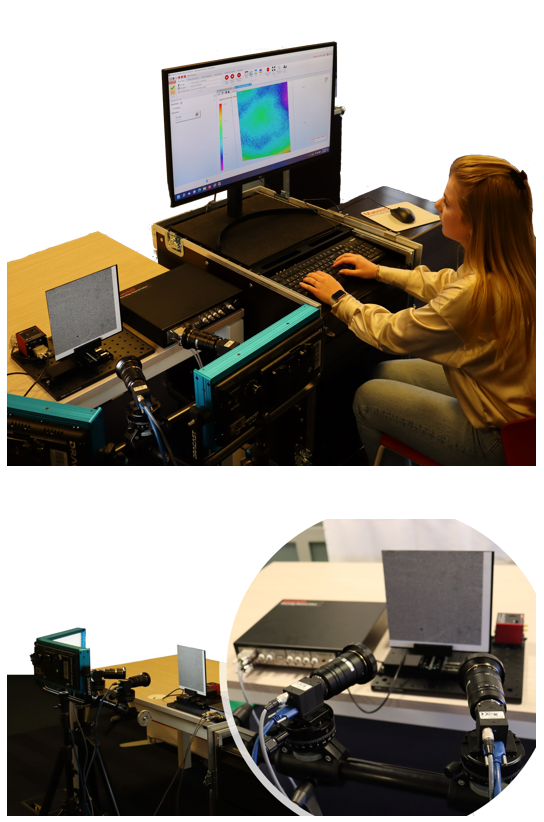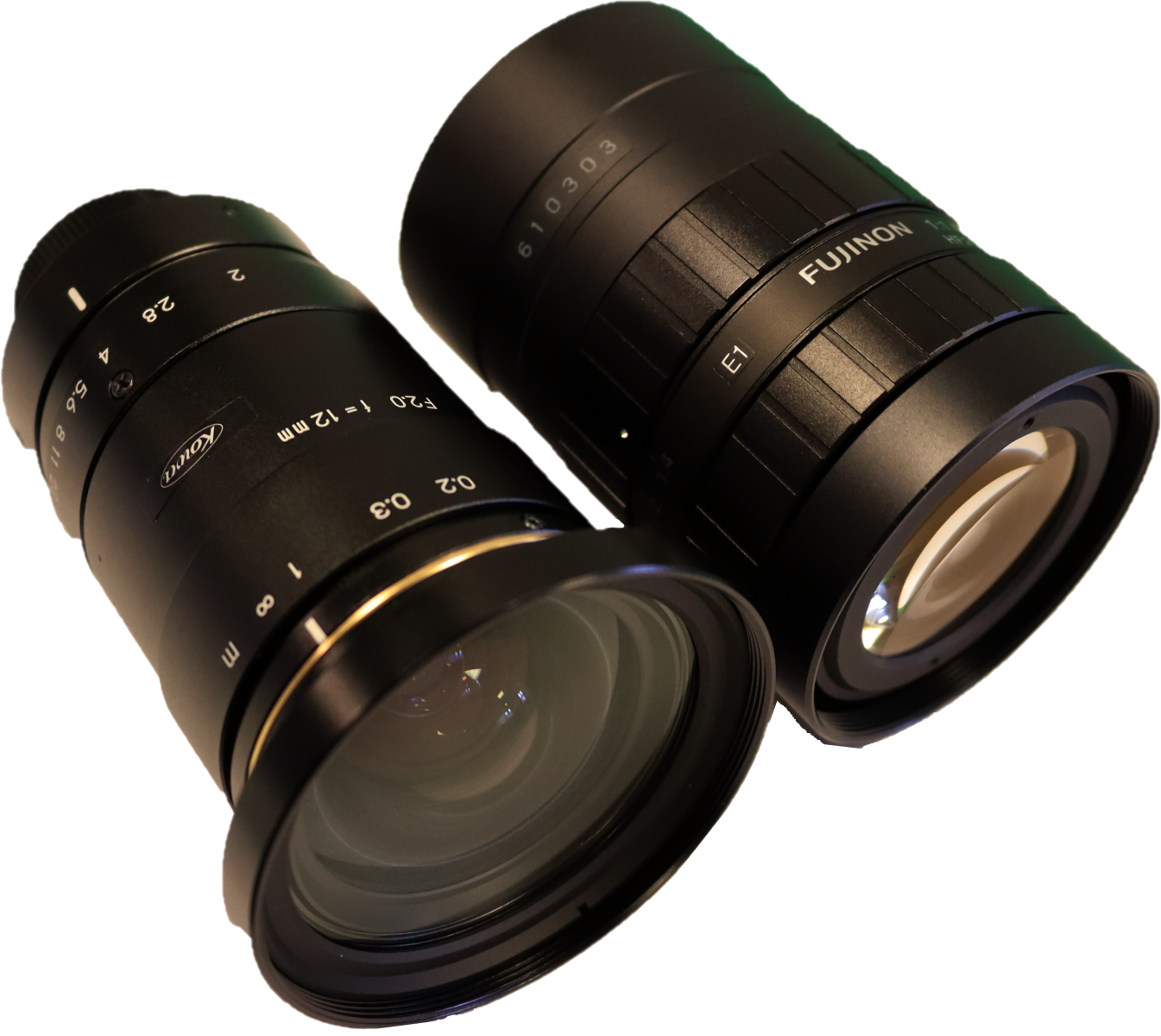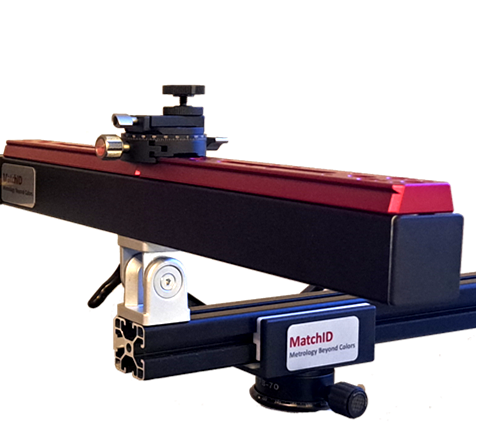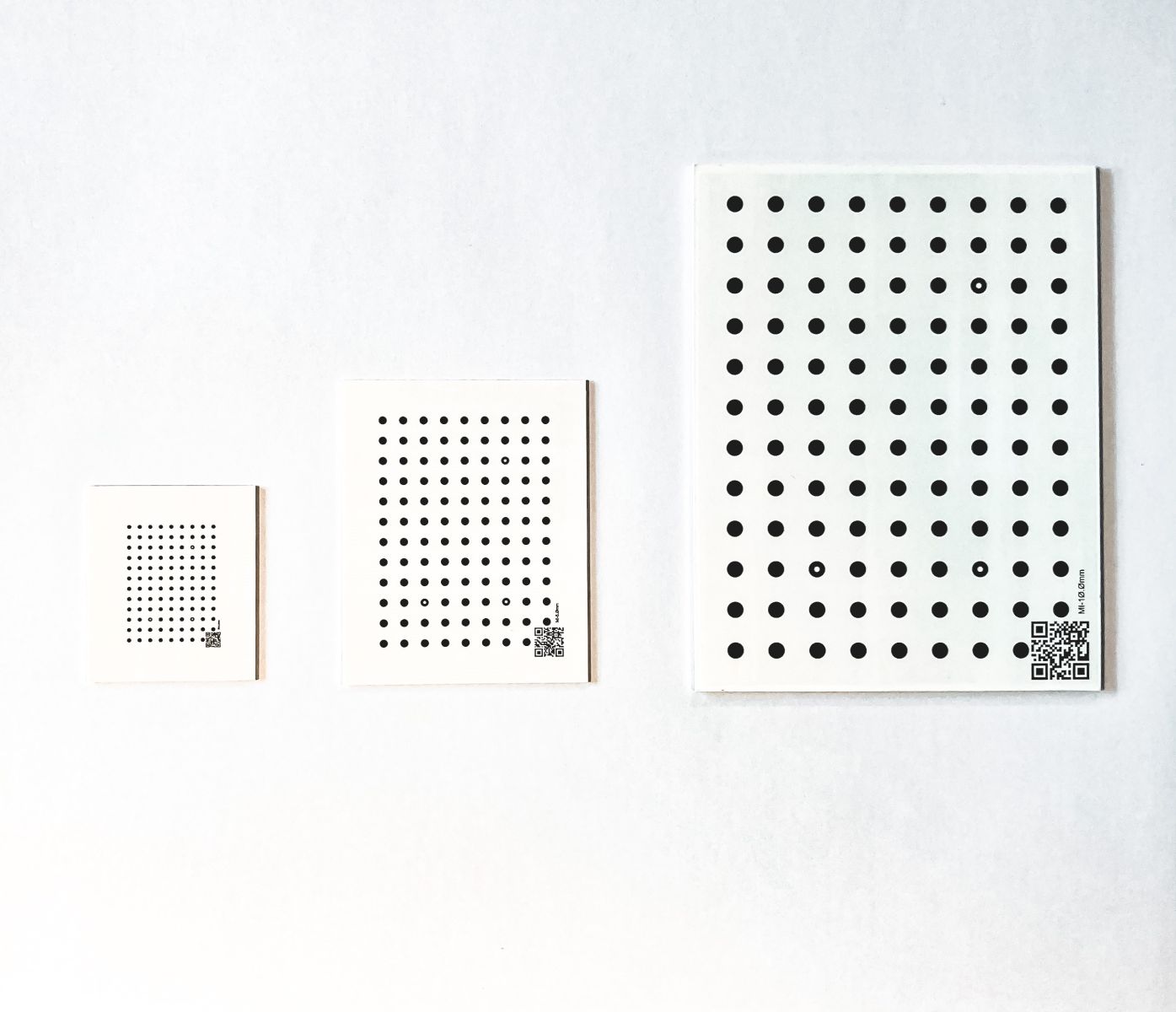Standard Equipment

Turnkey solution
A major challenge in DIC is to obtain accurate and precise measurement results. To that purpose, the DIC processing parameters and experimental setup conditions can be optimised with dedicated software analysis modules, backed up with extensive documentation and dedicated training unique to MatchID.
Despite the power of the software, the imaging quality and experimental conditions will heavily influence the final results: random errors might increase due to camera heating, lighting conditions, heat waves, etc. Systematic errors are largely subject to camera resolution, speckle quality, the calibration procedure, mounting conditions, etc. Finally, the temporal performance of the setup is mainly advocated by an optimised computer configuration, dedicated triggering, synchronisation of cameras and external signals, etc.
MatchID has developed turnkey solutions that give maximal control on all of these aspects, facilitating the journey of succesful testing.

Cameras
MatchID offers various camera solutions seamlessly integrated with our image acquisition software and synchronously triggered via our inhouse-made triggerbox. For quasi-static tests we collaborate with Teledyne-Flir, Allied Vision, Basler, Daheng and Baumer machine vision cameras, hereby embedding a versatility of camera resolutions and frame rates.

Lenses
To achieve solid-gold resolution and minimal image distortion, we made a refined selection of high-quality lenses (Fujinon, Kowa,etc). The camera – lens assembly is carefully investigated in terms of sensor coverage, optical distortions, vignetting, ease of use and quality for each configuration.
The lens equipment is backed up with an appropriate filter and mechanical components as e.g. extension tubes, in order to give the best results for your particular application.
Filters
All lenses have a chromatic aberration that effects the sharpness of the images. Based on the sensitivity of the sensor, a color-adjusted bandpass filter significantly increases image sharpness as well as it blocks excessive ambient light. MatchID offers the correct colored filters for all the suggested different sensors.
In addition to filtering in the color spectrum, specular reflections can be largely reduced with appropriate polarization filters for both lenses and light. This will allow to adequately perform optical measurerements of highly reflective surface.

Lighting
MatchID offers a variety of lighting solutions:
- For quasi-static applications 3000 Lumen light sets.
- For high-speed camera or low exposure quasi-static time applications higher lumen values.
The lighting sets are flexible in terms of light output and beam angle. Indeed, depending on the considered field of view (FOV),lenses on the lights can be swapped. For example, a smaller FOV might need a 15° beam angle, whereas a large structure might require a 60° beam angle.
To reduce specular reflection (reflective surfaces e.g.),linear light polarizers are offered in combination with appropriate filters for your camera lenses.
.png)
MatchID Units
The in-house developed MatchID Units are a central hub for a successful experiment. Accurate timing of the images during a DIC experiment is crucial. The units ensure synchronization of all involved cameras and analog signals with high accuracy.
The MatchID Trigger Unit is used to control the timing triggers, originating from the timing device and fed into to the machine vision cameras. A generic interface is provided making the Trigger Unit compatible with all our supported machine vision camera brands. Additionally, an output signal is provided to allow controlling an external device with the same timing accuracy.
The default Trigger Unit can support up to four cameras simultaneously but can be easily extended when required for a more elaborate multicamera setup. The number of cameras can be expanded using MatchID Camera Extension Units.
With the MatchID Grabber, real-time DIC data can be exported to control your process using a digital communication channel. If an analog signal is preferred over a digital one, the Feedback Unit can be used to convert the digital signal to an analog one.

Optical Rail System
We offer a dedicated Optical Rail System to mount the cameras. The T-configuration provides more flexibility in bringing the cameras closer to the object without being hampered by the tripod legs. All degrees of freedom can be probed, while the arca-swiss mounting guarantees perfect and stable gripping. On top, multiple rails can be combined into a single frame setup enabling back-to-back or even 360 degree configurations.

Computers
Custom composed computers are carefully designed to control multiple cameras using our in-house designed timing equipment, hereby
- Guaranteeing image acquisition and storage speed.
- Yielding best performance for DIC analysis and real-time signal capturing.
- lncorporating all necessary ports for camera control, live experimental feedback, and accurate timing.

Calibration Targets
The accuracy of a single camera or stereo measurements depends on how well the distortions from lens-sensor combinations are corrected as well as the accurate description of the camera locations in the world space. The underlying software algorithms, however, heavily rely on the quality of the involved calibration target.
We provide ceramic calibration targets that combine ultimate flatness and positional accuracy of the calibration dots. Dedicated targets can be selected that operate in both the IR as the white-light imaging regime. A wide selection of calibration target dimensions encompass few millimeter field-of-view applications up to very large structural testing.

Mobile System Rack
Our easy to use Mobile System Rack is tailored to store MatchID equipment. The rack is equipped with wheels, and consist of 5 drawers with a custom made foam. Everything is tailored in order to store all the MatchID equipment in it nicely. Furthermore, it contains a computer mounting space, a sideboard for the mouse and a topplate for your screen and keyboard.
No idea what you need?
We can help to compose the software stack you need, based on your objectives and the degree of adjustability you expect.

